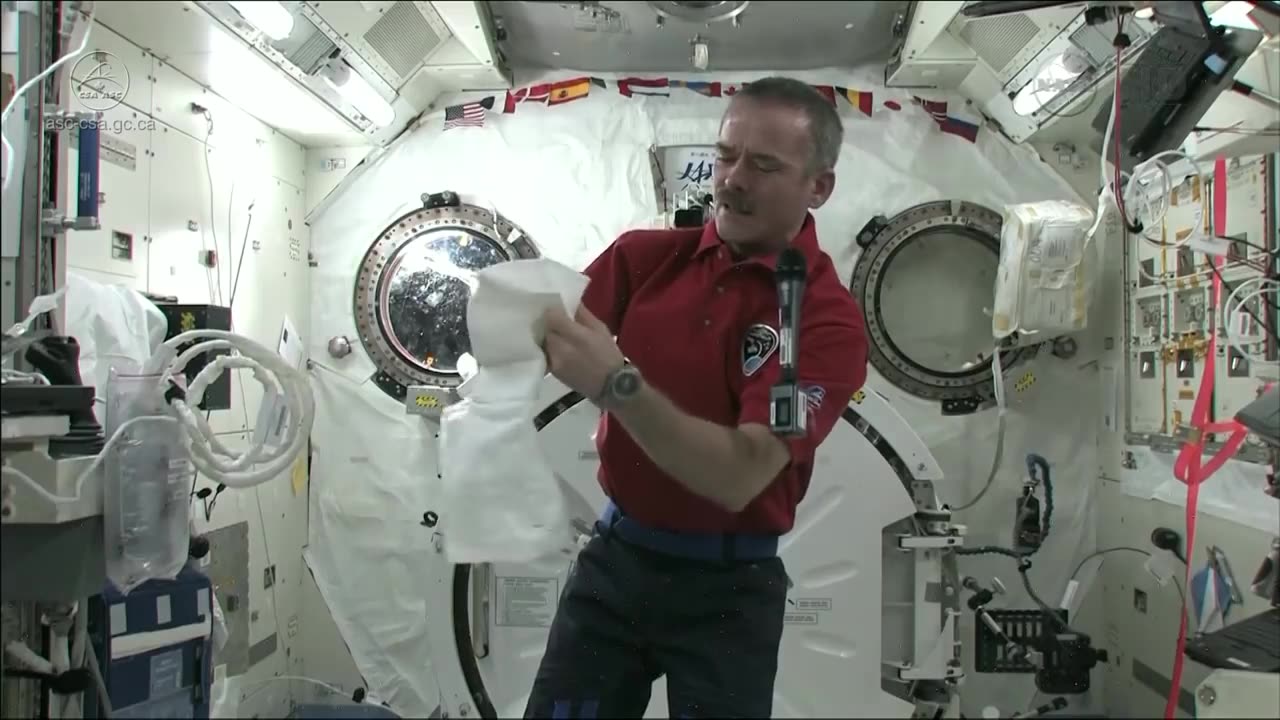Premium Only Content

HOW IT WORKS: The International Space Station
The International Space Station (ISS) is a massive technological and scientific project that involves collaboration between various countries. The main purpose of the ISS is to serve as a research laboratory for experiments in zero gravity and to facilitate international cooperation in space exploration.
Here's how it works:
1. Construction: The ISS is a modular spacecraft that has been built and assembled in space. The construction started in 1998 and was completed in 2011. It involved many space shuttles, rockets, and astronauts from various countries working together to bring different modules and components into orbit.
2. Orbit and Design: The ISS orbits around the Earth at an altitude of approximately 400 kilometers (250 miles). It travels at a speed of about 28,000 kilometers per hour (17,500 miles per hour), completing an orbit in roughly 90 minutes. The station's design consists of multiple modules that serve different purposes, such as living quarters, laboratories, and docking ports.
3. Crew: The ISS can accommodate up to six crew members who stay on board for several months at a time. The crew is made up of astronauts and cosmonauts from different countries, including the United States, Russia, Europe, Japan, and Canada.
4. Life Support Systems: The ISS has advanced life support systems that provide a controlled environment for the crew. These systems generate and recycle air, water, and electricity. They also maintain a stable temperature and pressure within the station.
5. Research and Experiments: The main objective of the ISS is to conduct scientific research in microgravity. This includes experiments in physics, biology, chemistry, astronomy, and human physiology. The ISS provides a unique environment for researchers to study the effects of weightlessness on various phenomena and explore potential applications in space exploration and life on Earth.
6. Resupply Missions: The ISS needs regular resupply missions to deliver food, water, equipment, and scientific experiments. These missions are carried out by different space agencies, including NASA, Roscosmos, and commercial space companies. Resupply spacecraft are launched from Earth and dock with the station using robotic or manual methods.
7. International Cooperation: The ISS is a symbol of international cooperation in space exploration. It involves collaboration between space agencies from the United States, Russia, Europe, Japan, and Canada. The participating countries work together to fund, design, build, and operate the station, as well as conduct joint research.
In summary, the International Space Station is a sophisticated and complex infrastructure that serves as a research laboratory in space. It provides a collaborative platform for international space agencies to study various scientific phenomena, advance our understanding of space, and prepare for future space missions, like those to the Moon and Mars.
-
 UPCOMING
UPCOMING
NEWSMAX
1 hour agoThe Gerry Callahan Show LIVE (04/28/2025) | NEWSMAX Podcasts
365 -
 5:27
5:27
SKAP ATTACK
10 hours ago $0.08 earnedLeBron Choking Yet Again...in the First Round
1224 -
 14:16
14:16
QNewsPatriot
8 hours ago(4/27/2025) | Official Statement Video by SGAnon Regarding QNewsPatriot's 2025 Syndication and Amplification Partnerships
13.1K50 -
 LIVE
LIVE
Wendy Bell Radio
5 hours agoSUPREME COWARDS
9,334 watching -
 1:27:26
1:27:26
JULIE GREEN MINISTRIES
3 hours agoLIVE WITH JULIE
84.5K170 -
 DVR
DVR
Welcome to the Rebellion Podcast
21 hours ago $1.55 earnedHe Wore a Blue Suit - WTTR Podcast Live 4/28
12.7K1 -
 1:54:43
1:54:43
Game On!
17 hours ago $4.18 earnedMel Kiper believes Shedeur Sanders will WIN a SUPER BOWL for the Browns!
24.7K1 -
 9:20
9:20
Tactical Advisor
1 day agoNew Shadow 2 Carry | CZ Compact Upgrade (FIRST LOOK)
119K25 -
 14:05
14:05
WhaddoYouMeme
19 hours ago $3.14 earnedThe Dangerous Lie He Told MILLIONS About Christianity
34.4K29 -
 15:47
15:47
Film Threat
13 hours agoSTAR WARS EPISODE III: REVENGE OF THE SITH RE-RELEASE | Film Threat Review
31K3